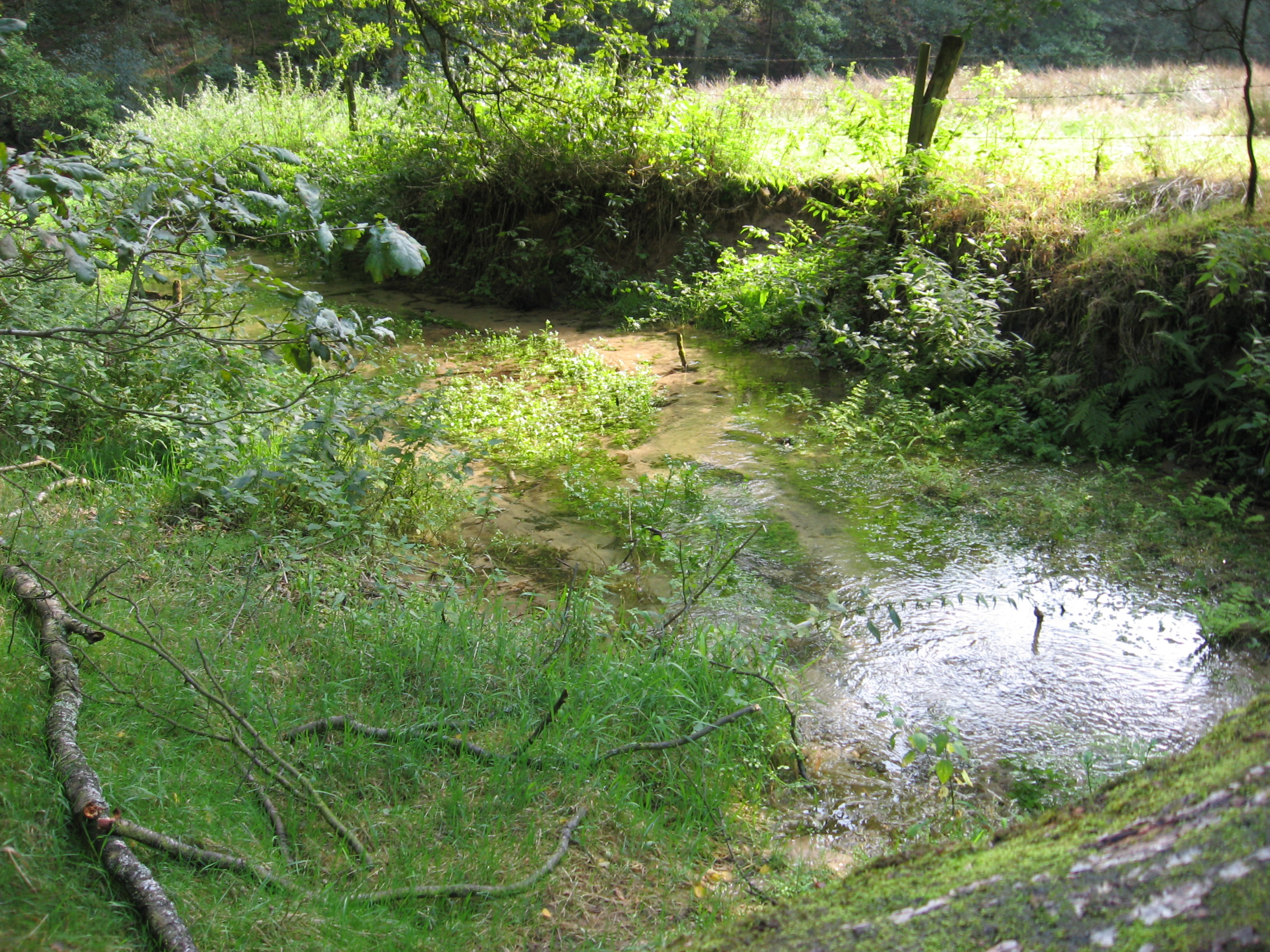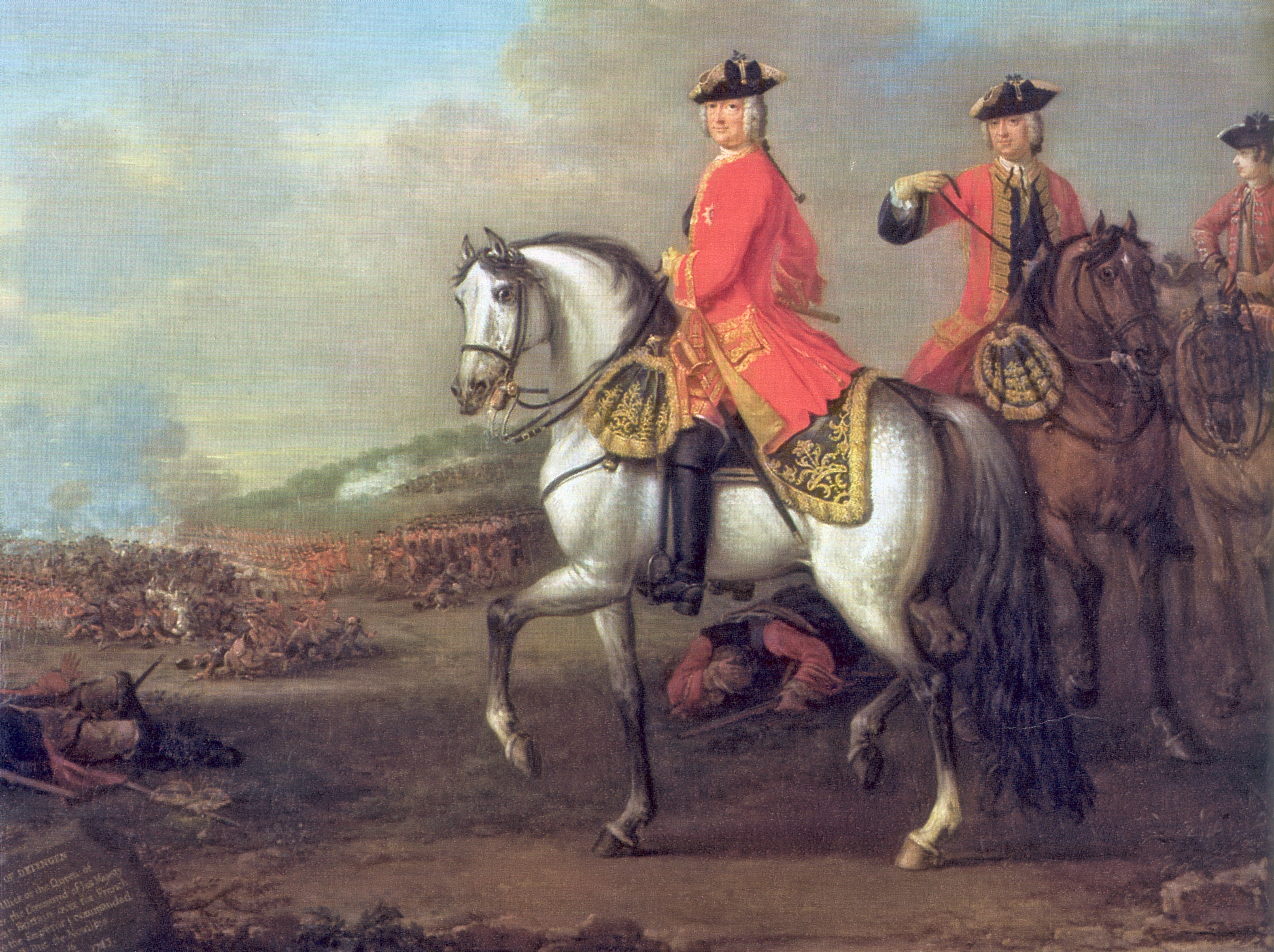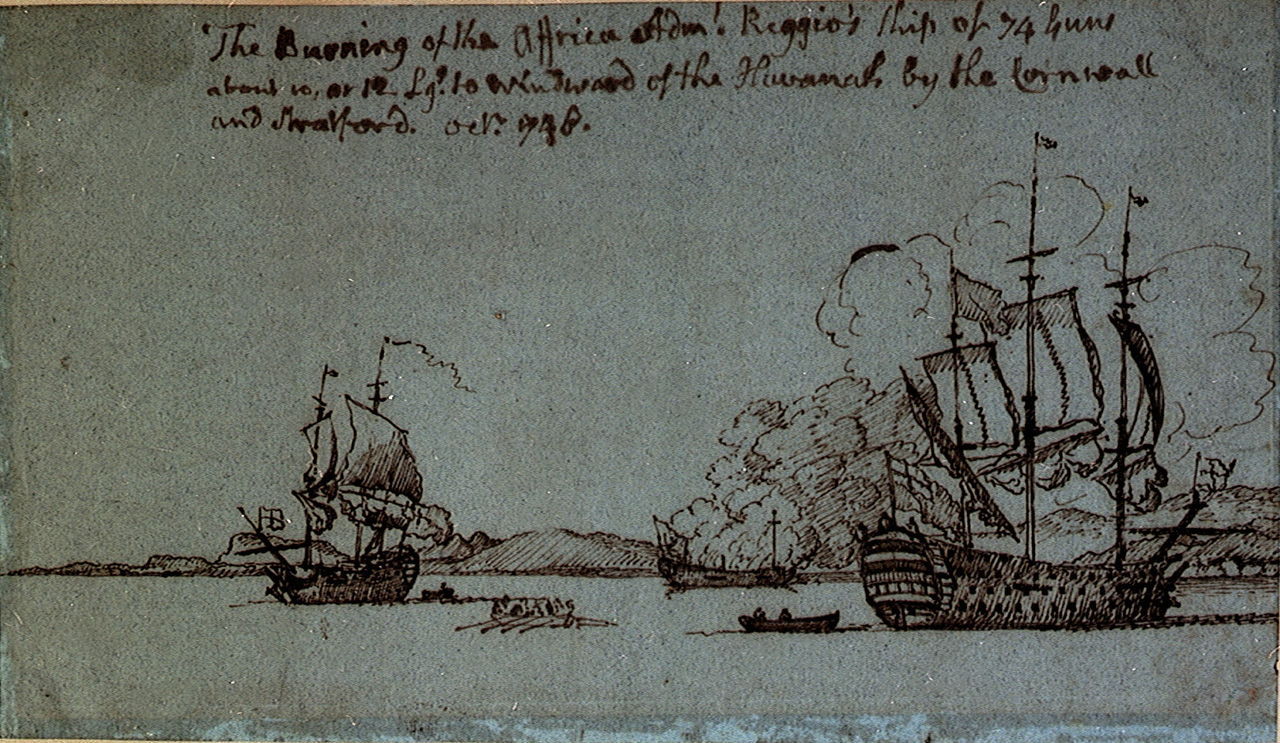|
Charles Holmes (Royal Navy Officer)
Rear-Admiral Charles Holmes (19 September 1711 – 21 November 1761) was a Royal Navy officer during the Seven Years' War, and was Wolfe's third-in-command during the capture of Quebec in 1759. He is also known for leading a British squadron up the River Ems in 1758, leading directly to the Capture of Emden. Early life Holmes was the fourth son of Colonel Henry Holmes, Lieutenant-Governor of the Isle of Wight. His maternal grandfather Admiral Sir Robert Holmes, who had overseen Holmes's Bonfire, was one of England's most noted naval leaders during the Anglo-Dutch Wars of the previous century. Joining the navy at the age of 16, Charles Holmes was promoted to lieutenant in 1734 and received his first command in 1741. In 1747 he was given command of HMS ''Lenox'', one of the biggest warships in the navy, but peace was signed the following year and he would serve for the next few years in British waters. Seven Years' War When the Seven Years' War broke out, he was comman ... [...More Info...] [...Related Items...] OR: [Wikipedia] [Google] [Baidu] |
HMS Anson (1747)
HMS ''Anson'' was a 60-gun fourth rate ship of the line of the Royal Navy, built at Bursledon by Philemon EwerBritish History Online, Bursledon. to the draught specified by the 1745 Establishment, and launched on 10 October 1747. ''Anson'' served until 1773, when she was sold out of the navy. Today, a model of the ship appears on a monument to Ewer in Bursledon parish church A parish church (or parochial church) in Christianity is the Church (building), church which acts as the religious centre of a parish. In many parts of the world, especially in rural areas, the parish church may play a significant role in com .... Notes References *Lavery, Brian (1983) ''The Ship of the Line - Volume 1: The development of the battlefleet 1650-1850''. Conway Maritime Press. . *William Page (editor) (1908'Parishes: Bursledon', ''A History of the County of Hampshire: Volume 3'' (1908), pp. 283-84.British History Online. Retrieved 29 June 2007. Ships of the line of the Royal ... [...More Info...] [...Related Items...] OR: [Wikipedia] [Google] [Baidu] |
Ems (river)
The Ems ( ; ) is a river in northwestern Germany. It runs through the states of North Rhine-Westphalia and Lower Saxony, and discharges into the Dollart Bay which is part of the Wadden Sea. Its total length is . The state border between the Lower Saxon area of East Friesland (Germany) and the province of Groningen (Netherlands), whose exact course was the subject of a border dispute between Germany and the Netherlands (settled in 2014), runs through the Ems estuary. Course The source of the river is in the southern Teutoburg Forest in North Rhine-Westphalia. In Lower Saxony, the brook becomes a comparatively large river. Here the swampy region of Emsland is named after the river. In Meppen the Ems is joined by its largest tributary, the Hase River. It then flows northwards, close to the Dutch border, into East Frisia. Near Emden, it flows into the Dollard bay (a national park) and then continues as a tidal river towards the Dutch city of Delfzijl. Between Emden and Delf ... [...More Info...] [...Related Items...] OR: [Wikipedia] [Google] [Baidu] |
Quebec
Quebec is Canada's List of Canadian provinces and territories by area, largest province by area. Located in Central Canada, the province shares borders with the provinces of Ontario to the west, Newfoundland and Labrador to the northeast, New Brunswick to the southeast and a coastal border with the territory of Nunavut. In the south, it shares a border with the United States. Between 1534 and 1763, what is now Quebec was the List of French possessions and colonies, French colony of ''Canada (New France), Canada'' and was the most developed colony in New France. Following the Seven Years' War, ''Canada'' became a Territorial evolution of the British Empire#List of territories that were once a part of the British Empire, British colony, first as the Province of Quebec (1763–1791), Province of Quebec (1763–1791), then Lower Canada (1791–1841), and lastly part of the Province of Canada (1841–1867) as a result of the Lower Canada Rebellion. It was Canadian Confederation, ... [...More Info...] [...Related Items...] OR: [Wikipedia] [Google] [Baidu] |
James Wolfe
Major-general James Wolfe (2 January 1727 – 13 September 1759) was a British Army officer known for his training reforms and, as a major general, remembered chiefly for his victory in 1759 over the French at the Battle of the Plains of Abraham in Quebec. The son of a distinguished general, Edward Wolfe, he received his first commission at a young age and saw extensive service in Europe during the War of the Austrian Succession. His service in Flanders and in Scotland, where he took part in the suppression of the Jacobite Rebellion, brought him to the attention of his superiors. The advancement of his career was halted by the Peace Treaty of 1748 and he spent much of the next eight years on garrison duty in the Scottish Highlands. Already a brigade major at the age of 18, he was a lieutenant-colonel by 23. The outbreak of the Seven Years' War in 1756 offered Wolfe fresh opportunities for advancement. His part in the aborted raid on Rochefort in 1757 led William Pitt ... [...More Info...] [...Related Items...] OR: [Wikipedia] [Google] [Baidu] |
Battle Of The Windward Passage
The Battle of the Windward Passage was a small naval action between French and British fleets that occurred on 17 to 19 October 1760 during the Seven Years' War. The action took place in the Caribbean between Cap-Français and Eastern Cuba and resulted in a British victory.Marely, p. 288. At dawn on 17 October 1760, Admiral Charles Holmes in the 50-gun , Captain Coningsby Norbury, took , Samuel Uvedale, and the 20-gun , Frederick Lewis Maitland, to intercept a French convoy they had sighted in the Windward Passage. The convoy was escorted by the 32-frigates ''Sirène'', ''Duc de Choiseul'', ''Prince Edward'', and ''Fleur de Lys'', and the 20-gun corvette ''Valeur''. The British gave chase but light winds slowed hampered them so it was evening before the lead ship ''Boreas'' could engage ''Sirène''. French fire disabled ''Boreas'' aloft with the result that ''Boreas'' could not engage ''Sirène'' again until the following afternoon. ''Boreas'' emerged victorious from the engag ... [...More Info...] [...Related Items...] OR: [Wikipedia] [Google] [Baidu] |
Seven Years' War
The Seven Years' War, 1756 to 1763, was a Great Power conflict fought primarily in Europe, with significant subsidiary campaigns in North America and South Asia. The protagonists were Kingdom of Great Britain, Great Britain and Kingdom of Prussia, Prussia versus Kingdom of France, France and Habsburg monarchy, Austria, the respective coalitions receiving by countries including Portuguese Empire, Portugal, Spanish Empire, Spain, Electorate of Saxony, Saxony, Age of Liberty, Sweden, and Russian Empire, Russia. Related conflicts include the Third Silesian War, French and Indian War, Carnatic wars, Third Carnatic War, Anglo-Spanish War (1762–1763), Anglo-Spanish War (1762–1763), and Spanish–Portuguese War (1762–1763), Spanish–Portuguese War. Although the War of the Austrian Succession ended with the Treaty of Aix-la-Chapelle (1748), none of the signatories were happy with the terms, and it was generally viewed as a temporary armistice. It led to a strategic realignment kn ... [...More Info...] [...Related Items...] OR: [Wikipedia] [Google] [Baidu] |
Battle Of Havana (1748)
The Battle of Havana was a naval engagement that took place between the British Caribbean squadron and a Spanish squadron based near Havana during the War of Jenkins' Ear.Thomas p 263 The battle occurred on the morning of the 12th and ended on 14 October 1748. The belligerents consisted of two squadrons under the command of Admiral Andrés Reggio of the Spanish Navy and Admiral Sir Sir Charles Knowles, 1st Baronet, Charles Knowles of the Royal Navy, respectively. The British succeeded in driving the Spanish back to their harbour after capturing the ''Conquistador'' and ran the vice-admiral's ship ''Africa'' on shore, where she was blown up by her own crew after being totally dismasted and made helpless. Although the advantage had clearly been with Knowles, he failed to use this to deliver a decisive blow.Harding p 332-33 The battle was the last major action in the War of Jenkins' Ear which had merged with the larger War of the Austrian Succession. Background By 1747 actions fo ... [...More Info...] [...Related Items...] OR: [Wikipedia] [Google] [Baidu] |
Battle Of Santiago De Cuba (1748)
The battle of Santiago de Cuba, which took place on 9 April 1748, was a failed attempt by elements of the British Royal Navy under Rear-Admiral Charles Knowles to force the entrance of the port of Santiago de Cuba with the aim of striking a blow to the Spanish trade and privateering, since Santiago was a major base of the Spanish privateers in the Caribbean.Richmond p. 120 Two British ships of line were put out of action by the batteries of Morro Castle and had to be towed to open sea. The remaining British warships retreated soon after. Background Sir Charles Knowles, who had been promoted to rear-admiral of the white on 15 July 1747, and appointed as commander in chief on the Jamaica station, At p. 293. prepared in 1748 an expedition with the aim of recover from the setbacks suffered during the previous stages of the war by attacking the Spanish trade and protecting their own. On 17 February he departed Port Royal with 240 of Governor Trelawney's Jamaican troops aboard hi ... [...More Info...] [...Related Items...] OR: [Wikipedia] [Google] [Baidu] |
Battle Of Cartagena De Indias
The Battle of Cartagena de Indias () took place during the 1739 to 1748 War of Jenkins' Ear between Spanish Empire, Spain and Kingdom of Great Britain, Great Britain. The result of long-standing commercial tensions, the war was primarily fought in the Caribbean; the British tried to capture key Spanish ports in the region, including Battle of Porto Bello (1739), Porto Bello and Chagres and Fort San Lorenzo, Chagres in Panama, Havana, and Cartagena, Colombia, Cartagena de Indias in present-day Colombia. Two previous naval attacks in 1740 had failed and for the third attempt in March 1741, the British had opted for a combined naval and land campaign. The British were initially successful; destroying the Boom (navigational barrier), chain barrier across the narrow channel of Boca chica and capturing the Fort San Luis. However a night assault on Fort San Lazaro failed and the British were forced to retreat, having suffered over 9,500–11,500 fatalities, in great part to disease, a ... [...More Info...] [...Related Items...] OR: [Wikipedia] [Google] [Baidu] |
War Of The Austrian Succession
The War of the Austrian Succession was a European conflict fought between 1740 and 1748, primarily in Central Europe, the Austrian Netherlands, Italian Peninsula, Italy, the Atlantic Ocean and Mediterranean Sea. Related conflicts include King George's War in North America, the War of Jenkins' Ear, the First Carnatic War, and the First Silesian War, First and Second Silesian Wars. Its pretext was the right of Maria Theresa to succeed her father, Charles VI, Holy Roman Emperor, Emperor Charles VI, as ruler of the Habsburg monarchy. Kingdom of France, France, Kingdom of Prussia, Prussia, and Electorate of Bavaria, Bavaria saw it as an opportunity to challenge Habsburg power, while Maria Theresa was backed by Kingdom of Great Britain, Britain, the Dutch Republic, and Electorate of Hanover, Hanover, collectively known as the Pragmatic Sanction of 1713, Pragmatic Allies. As the conflict widened, it drew in other participants, among them History of Spain (1700–1810), Spain, Kingdom of ... [...More Info...] [...Related Items...] OR: [Wikipedia] [Google] [Baidu] |
Jamaica Station (Royal Navy)
The Jamaica Station was a command of the Royal Navy which existed from 1655 to 1830. Located in the British colony of Jamaica, it was headquartered at Port Royal. In 1830, the command was merged with the North America and Newfoundland Station to form the North America and West Indies Station. History The station was formed, following the capture of Jamaica, by assembling about a dozen frigates in 1655. The first "Admiral and General-at-Sea" was Sir William Penn.Cundall, p. xx Its main objectives in the early years were to defend Jamaica and to harass Spanish ports and shipping. In the late 1720s three successive commanders of the station lost their lives to tropical diseases while undertaking a Blockade of Porto Bello during the Anglo-Spanish War. The general ill-health associated with the station continued throughout the century. An assessment of Navy strength at the Jamaica station in 1742 found around 3,000 men were fit to serve out of a total Navy complement of 6,620. A ... [...More Info...] [...Related Items...] OR: [Wikipedia] [Google] [Baidu] |







